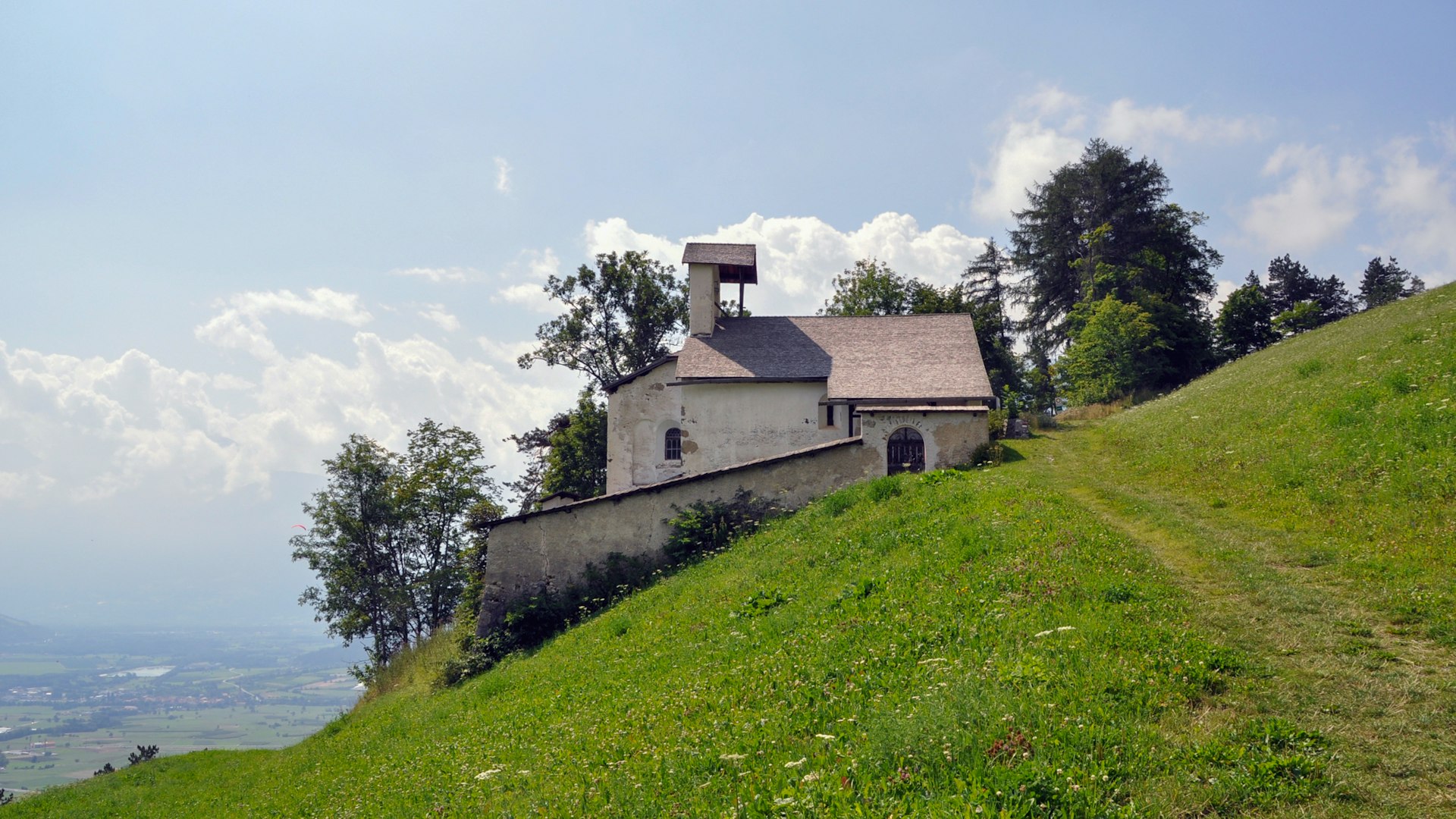magazine_ Article
Individuals from the early Middle Ages found in the cemetery of Santo Stefano
Analyses by Eurac Research have revealed high genetic diversity and kinship links from remains
The remains preserved in the early medieval cemetery were discovered in the late 1980s by the Provincial Cultural Heritage Office during restoration work on the small church of Santo Stefano. From an archaeological point of view, these findings raised two main questions: where did the people buried in the cemetery come from? And were the individuals found in one grave related to each other? Almost forty years later, anthropological and genetic analyses provide answers and permit a glimpse into migratory flows and social organization in the early Middle Ages.
The individuals analyzed by the Eurac Research team come from graves located both inside and outside the church of Santo Stefano located in Burgeis/Burgusio, the largest frazione of the commune of Mals/Malles in the Vinschgau/Venosta valley in South Tyrol. In one of the graves located closest to the altar, number 2, the type of grave goods: parts of a belt in a style atypical to the region, suggest the presence of a male individual of a different culture and possibly origin. The presence of several individuals in grave number 2 burial also suggest it was a family tomb. Another part of a belt was later found in grave number 3, which contained the remains of another male individual.
Archaeological data tells us that, in the early Middle Ages, the end of the Roman Empire saw increased movement of people between the north, west and east, so local archaeologists wondered whether the people buried in Santo Stefano were from further afield. Could the remains of the belts with Germanic decorative styles suggest the presence of non-local individuals, or are they just evidence that the local population had contact with other peoples and acquired these items somehow?
We were surprised to discover so much genetic variety in a small Alpine cemetery
Valentina Coia
“Genetic analysis does not provide definitive answers to all these questions, but it is of great help to us because it allows us to retrieve information that is impossible to obtain through archaeological study alone,” explains Valentina Coia, biologist at Eurac Research. The palaeogenomic analyses carried out on 21 individuals buried in the cemetery have shown a high degree of heterogeneity at the genomic level. It is worth noting that this is a genetic component that can be traced back to southern Europe and central Italy in particular. This finding does not suggest the presence of ‘migrants’ but indicates a genetic exchange with people of different origins. “In part we expected this result, as European individuals from this period generally testify to complex genetic mixing events, but we were surprised to discover so much genetic variety in a small Alpine cemetery. Analyses we had previously conducted on early medieval samples found in the province have tended to indicate less mobility and greater isolation in the Vinschgau/Venosta Venosta region compared to other valleys, such as the Eisack/Isarco or Etsch/Adige valleys,” Coia explains.
The study tells us about the social structure at the time in this territory
Alice Paladin
The second question of scientific interest concerns the kinship ties between the individuals found in the cemetery, and particularly those buried in grave 2. Did they belong to the same family, as speculated by archaeologists? The proximity to the altar, the presence of the grave goods and the characteristics of the burial seemed to suggest that the individuals belonged to a family of high social status. “In grave 2, there were both complete skeletons and the remains of skulls and other scattered bones,” explains bioarchaeologist Alice Paladin, “As a result of our study, we found that the remains in grave 2 belonged to at least 13 individuals, and most of those studied genetically were in fact related. For instance, we detected the presence of a father and a son. However, not all of them were biologically related”. In fact, a woman with no biological ties to the other individuals is buried next to the remains of the individual identified as the ‘son’ and the genetic analysis of this female individual revealed a high level of mixing with northern European groups. “These results suggest the presence of a possible familia: a group that considered not only the biological ties between individuals, but also relationships that went beyond kinship. The study therefore tells us about the social structure at the time in this territory,” adds Paladin. “Combining the anthropological and genetic analyses with the archaeological data at our disposal has allowed us to clarify the picture and to understand that the cultural hybridization observed in this area at the time was accompanied by complex processes of genetic mixing,” conclude the lead researchers of the study which was published in the journal iScience: https://www.sciencedirect.com/science/article/pii/S2589004223022927



